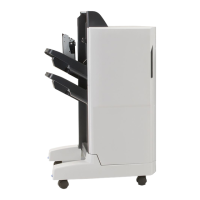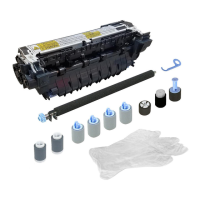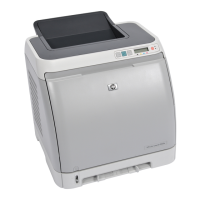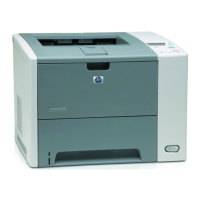Common causes of paper jams
The following table lists common causes of paper jams and suggested solutions for resolving
them.
Issue Cause Solution
Paper does not meet
HP-recommended paper
specifications.
Use only paper th at meets HP
specifications. See
Supported
paper weights and siz e s.
A supply item is installed
incorrectly, causing repeated
jams.
Verify that all print cartridges,
the trans fer unit, and the fuser
are corre ctl
y installed.
You are reloading paper that
has already passed through a
printerorcopier.
Do not use paper that has been
previously printed on or copied.
An input tray is loaded
incorrectly.
Remove any excess paper from
the input tray. Be sure that it
does not exceed the maximum
stack height mark in the input
tray. See
Configuring input
trays.
Paper is skewed. Input tray guides are not
adjusted correctly. Ad just input
tray guides so they ho ld paper
firmly in place without bending
it.
Paper is binding or stickin g
togethe
r.
Remove paper, flex it, rotate
it 180 de
grees, or flip it over.
Reload paper into the input tray.
Do not fan paper.
Paper is removed before it
settles into the ou tput bin.
Reset the prin ter. Wait until the
page completely settles in the
output bin before removing it.
When duplexing, the paper i s
removed before the second side
of the document is printed.
Reset the printer and print the
document again. Wait until the
page completely settles in the
output bin before removing it.
Paper is in poor condition. Replace the paper.
Paper is not picked up by the
internal rollers from Tray 2,
Tray
3, or Tray 4.
Remove the top sheet of paper.
If the paper is heavier than
163 g
/m
2
(43 lb), it may not be
picked from t he tray.
Paper has rough or jagged
edges.
Replace the paper.
Common causes of paper jams
1
Paper is perforated or
embossed.
This paper does not separate
easily. You might need to feed
single sheets from Tray 1.
EN_WW Common causes of paper jams 140
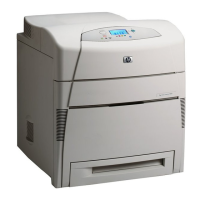
